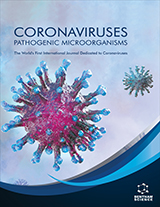Abstract
Background: For the first time in December 2019, as reported in the Wuhan city of China, COVID-19 deadly virus spread rapidly around the world and the first cases were seen in Turkey on March 11, 2020. On the same day, a pandemic was declared by the World Health Organization due to the rapid spread of the disease throughout the world.
Methods: In this study, a multilayered perception feed-forward back propagation neural network has been designed for predicting the spread and mortality rate of the COVID-19 virus in Turkey. COVID-19 data from six different countries were used in the design of the artificial neural network, which has 15 neurons in its hidden layer. 70% of these optimized data were used for training, 20% for validation, and 10% for testing.
Results: The simulation results showed that the COVID-19 virus in Turkey, between day 20 and 37, was the fastest to rise. The number of cases for the 20th day was predicted to be 13.845.
Conclusion: As for the death rate, it was predicted that a rapid rise would start on the 20th day and a slowdown around the 43rd day and progress towards the zero case point. The death rate for the 20th day was predicted to be 170 and for the 43rd day it was 1,960s.
Keywords: CoVID-19, Turkey, Wuhan, artificial neural network, viral transmission, pandemic, SARS-CO-V-2.
Coronaviruses
Title:Prediction of Infection and Death Ratio of COVID-19 Virus in Turkey by Using Artificial Neural Network (ANN)
Volume: 2 Issue: 1
Author(s): Andaç Batur Çolak*
Affiliation:
- Department of Mechanical Engineering, Nigde Omer Halisdemir University, Nigde 51240,Turkey
Keywords: CoVID-19, Turkey, Wuhan, artificial neural network, viral transmission, pandemic, SARS-CO-V-2.
Abstract:
Background: For the first time in December 2019, as reported in the Wuhan city of China, COVID-19 deadly virus spread rapidly around the world and the first cases were seen in Turkey on March 11, 2020. On the same day, a pandemic was declared by the World Health Organization due to the rapid spread of the disease throughout the world.
Methods: In this study, a multilayered perception feed-forward back propagation neural network has been designed for predicting the spread and mortality rate of the COVID-19 virus in Turkey. COVID-19 data from six different countries were used in the design of the artificial neural network, which has 15 neurons in its hidden layer. 70% of these optimized data were used for training, 20% for validation, and 10% for testing.
Results: The simulation results showed that the COVID-19 virus in Turkey, between day 20 and 37, was the fastest to rise. The number of cases for the 20th day was predicted to be 13.845.
Conclusion: As for the death rate, it was predicted that a rapid rise would start on the 20th day and a slowdown around the 43rd day and progress towards the zero case point. The death rate for the 20th day was predicted to be 170 and for the 43rd day it was 1,960s.
Export Options
About this article
Cite this article as:
Çolak Batur Andaç*, Prediction of Infection and Death Ratio of COVID-19 Virus in Turkey by Using Artificial Neural Network (ANN), Coronaviruses 2021; 2 (1) . https://dx.doi.org/10.2174/2666796701999200915142539
| DOI https://dx.doi.org/10.2174/2666796701999200915142539 |
Print ISSN 2666-7967 |
| Publisher Name Bentham Science Publisher |
Online ISSN 2666-7975 |
 6
6
- Author Guidelines
- Graphical Abstracts
- Fabricating and Stating False Information
- Research Misconduct
- Post Publication Discussions and Corrections
- Publishing Ethics and Rectitude
- Increase Visibility of Your Article
- Archiving Policies
- Peer Review Workflow
- Order Your Article Before Print
- Promote Your Article
- Manuscript Transfer Facility
- Editorial Policies
- Allegations from Whistleblowers
- Announcements
Related Articles
-
Recent Approaches of Repositioning and Traditional Drugs for the Treatment of COVID-19 Pandemic Outbreak
Mini-Reviews in Medicinal Chemistry Broadening Our View of Protective Antibody Responses Against HIV
Current HIV Research Potential Immunotherapy against SARS-CoV-2: Strategy and Status
Coronaviruses nCovid-19 in 2020: From Despair to Hope
Coronaviruses Editorial: From Perfume Oils to Discovering and Making New Molecules: An International Chemical Biology Journey
Combinatorial Chemistry & High Throughput Screening Persistent Hiccups as an Atypical Initial Presentation of COVID-19: A Case Report
Infectious Disorders - Drug Targets The Role of Nanoparticles as Nanocarriers for the Controlled Release of some Potential Existing Antiviral Drugs for SARS-CoV-2 Management: A Review
Coronaviruses Artificial Intelligence in Pharmaceutical Field - A Critical Review
Current Drug Delivery Novel Corona-Virus Disease 2019 (COVID-19): A Perilous Life- Threatening Epidemic
Coronaviruses Pilot Randomised Controlled Trial to Test Effectiveness of Facemasks in Preventing Influenza-like Illness Transmission among Australian Hajj Pilgrims in 2011
Infectious Disorders - Drug Targets Pulmonary Rehabilitation in COVID-19: The Contribution of other Chronic Lung Syndromes for the Intervention of a Novel Disease
Current Respiratory Medicine Reviews Discovery of Potent Anti-SARS-CoV MPro Inhibitors
Current Computer-Aided Drug Design Non-Respiratory Manifestations of COVID-19 and Pathophysiological Evidences
New Emirates Medical Journal Effective Chemicals against Novel Coronavirus (COVID-19) in China
Current Topics in Medicinal Chemistry Impact of Headache Frequency and Sleep on Migraine Patients During the COVID-19 Pandemic
Current Neurovascular Research Impact of Covid-19 on Mental Health: An Overview
Reviews on Recent Clinical Trials A Further Step Toward an Optimal Ensemble of Classifiers for Peptide Classification, a Case Study: HIV Protease
Protein & Peptide Letters COVID-19 Pandemic: Current Scenario, Challenges and Future Perspectives
Coronaviruses Management of Idiopathic Intracranial Hypertension During the COVID-19 Pandemic
Reviews on Recent Clinical Trials COVID-19 Pandemic: Care for Indian Cancer Patients
Coronaviruses



























